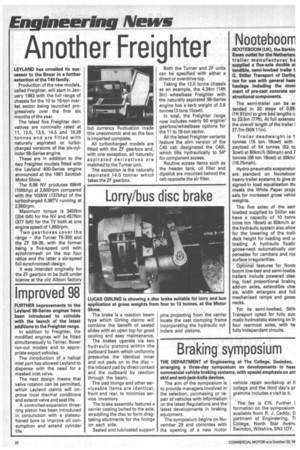Nooteboorn
Page 10

If you've noticed an error in this article please click here to report it so we can fix it.
NOOTEBOOM (UK), the Barkin■ Essex outlet for the Netherlanc trailer manufacturer ha supplied a five-axle double e) tendible, semi-lowbed trailer t G. Stiller Transport of Darlinc ton for use with general heav haulage including the movo ment of pre-cast concrete cow structional components.
The semi-trailer can be e) tended in 20 steps of 0.551 (1ft 91/2in) to give bed lengths u to 23.5m (77ft). At full extensio the overall length of the trailer i 27.7m (90ft 11in).
Trailer deadweight is 1 tonnes (15 ton 16cwt) with payload of 54 tonnes (53 to 3cwt) at 80km/h (50mph) and 7 tonnes (68 ton 18cwt) at 30km/ (18.75mph).
Hydro-pneumatic suspension are standard on Nooteboor heavy trailer systems to give de signed-in load equalisation the meets the White Paper prop( sals for increased gross vehicl weights.
The five axles of the sem lowbed supplied to Stiller eac have a capacity of 10 tonne (nine ton 16cwt) at 80km/h an the hydraulic system also allovi for the lowering of the trail( deck height for loading and ui loading. A hydraulic floatir goose-neck automatically con pensates for cambers and roa surface irregularities.
Optional features for Noott boom low-bed and semi-lowbe trailers include powered steel ing, load proportional brakinc add-on axles, extendible thee sis, width enlargers and full mechanised ramps and goose necks.
For its semi-lowbed, Stille Transport opted for fully autc matic hydrostatic steering on th four rearmost axles, with tw fully independent circuits.


















































































































